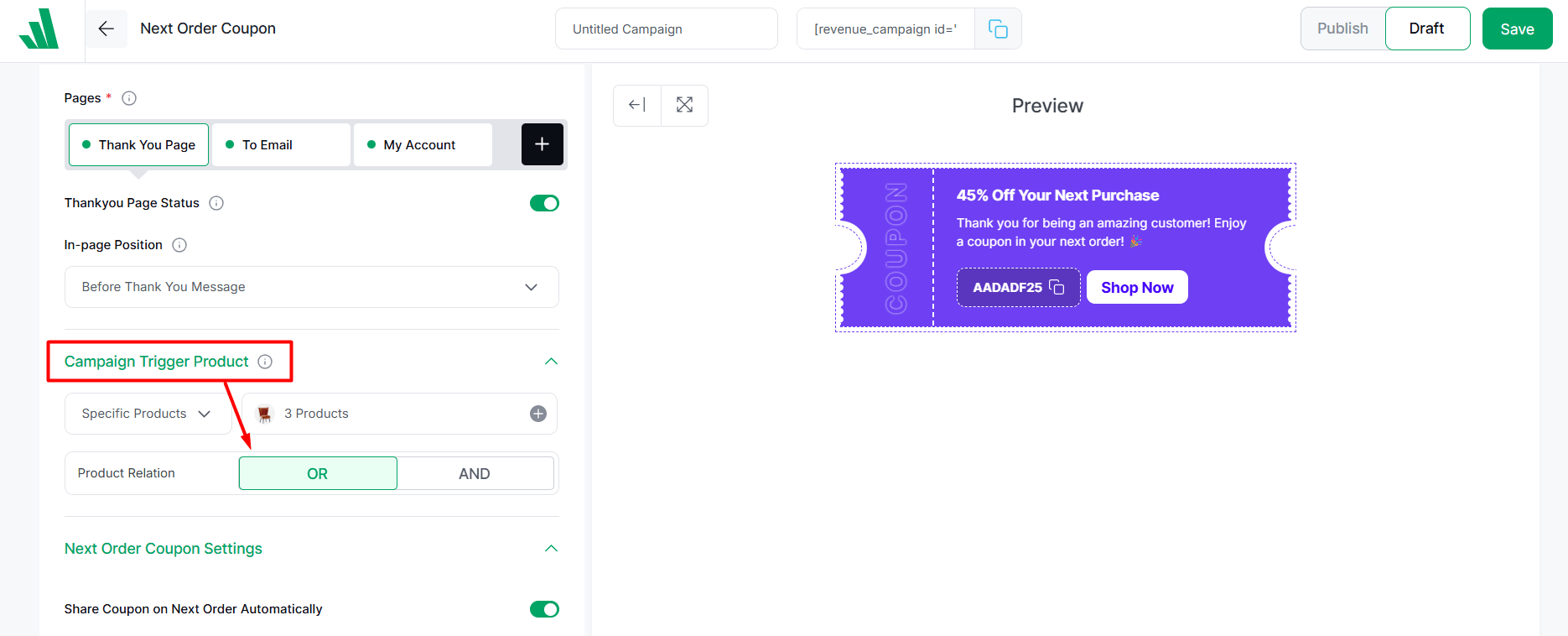WowRevenue applies two types of product relations (AND & OR) for trigger products. These are applied exclusively in the Buy X Get Y, Frequently Bought Together, and Next Order Coupon Campaign.
This relation will let you control how trigger products are grouped to offer discounted products. Let’s understand each campaign type with examples.
If you need further assistance after reading this, please don’t hesitate to contact us. We’re always happy to help!
Buy X Get Y
Product Relation (And)
The “And” relation means all the X products must be added to qualify for the offer and get the Y product.
Imagine products A, B, and C are grouped together as product X. Then, when customers visit any of these product pages—say, product C’s page—they must also purchase products A and B along with C to qualify for the offer and receive product Y.
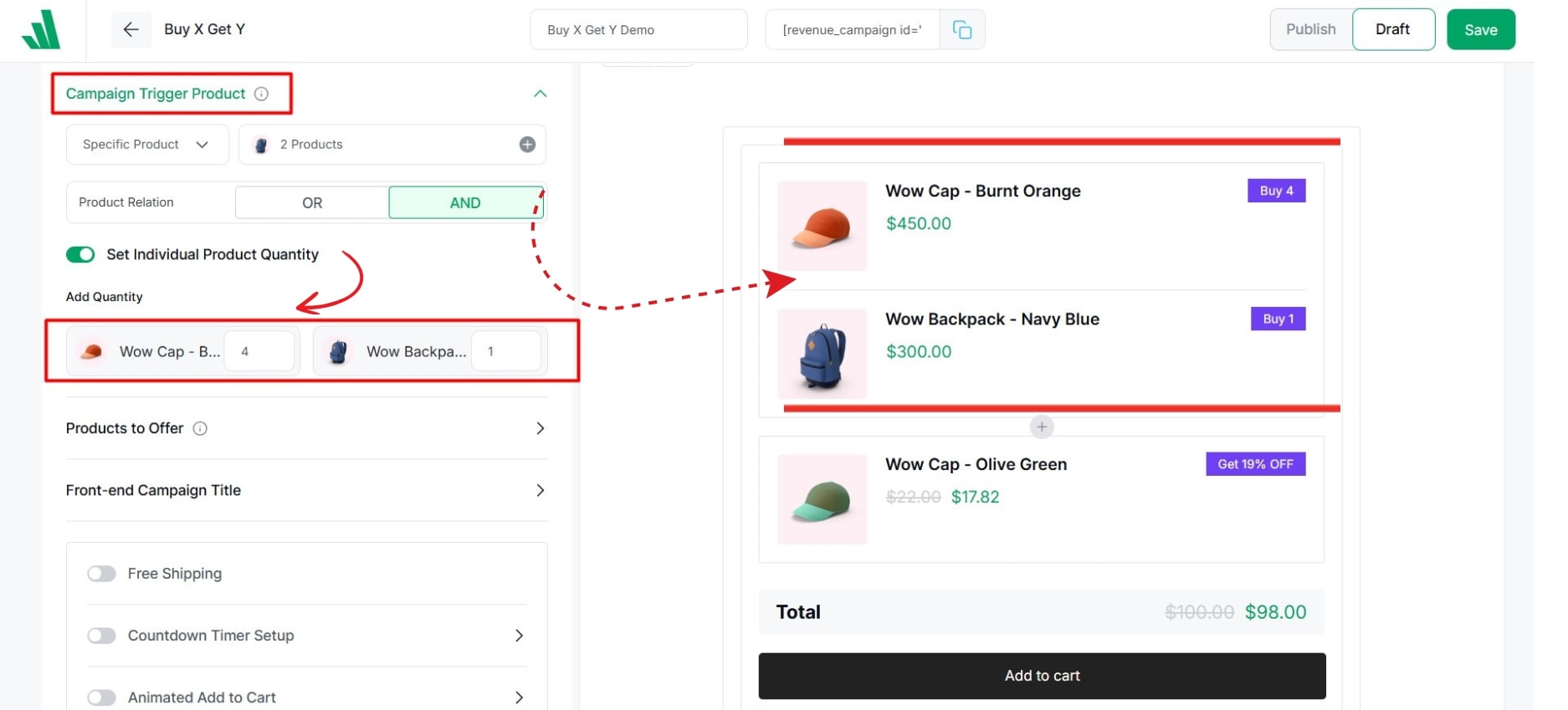
Product Relation (OR)
The “Or” relation means only the X product from the current page needs to be added to get the Y product.
For example, if the customer is on Product A’s page, purchasing only Product A will enable them to get Product B.
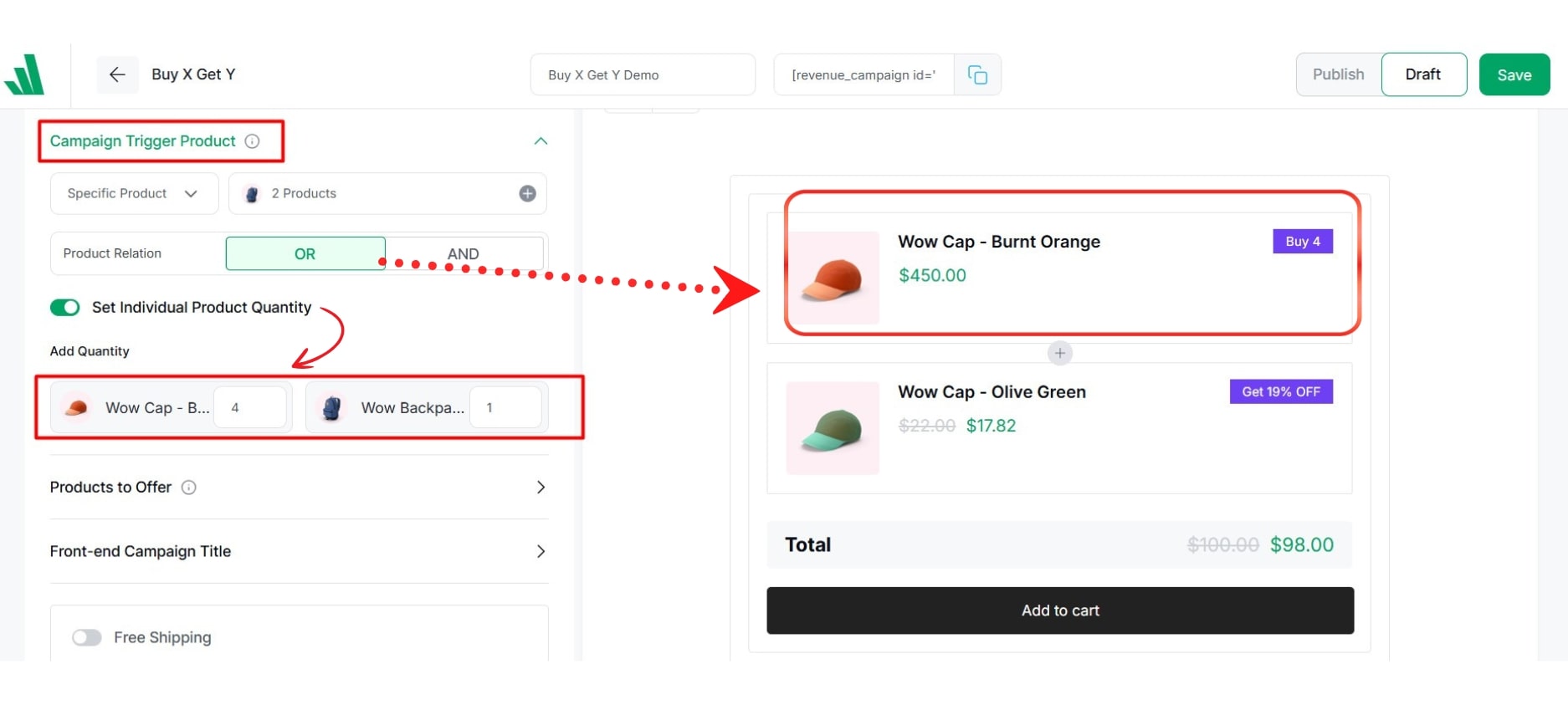
Frequently Bought Together
Enable Required Trigger Product: Toggle this option on to make the main product mandatory for getting a discount on related products.
Product Relation (AND)
The product relation AND means all the main products that are selected as trigger products must be added to get the related products in discounted price.
Example: If the main products are products A, B, and C, customers need to add all three to the cart to receive the offer on related products.
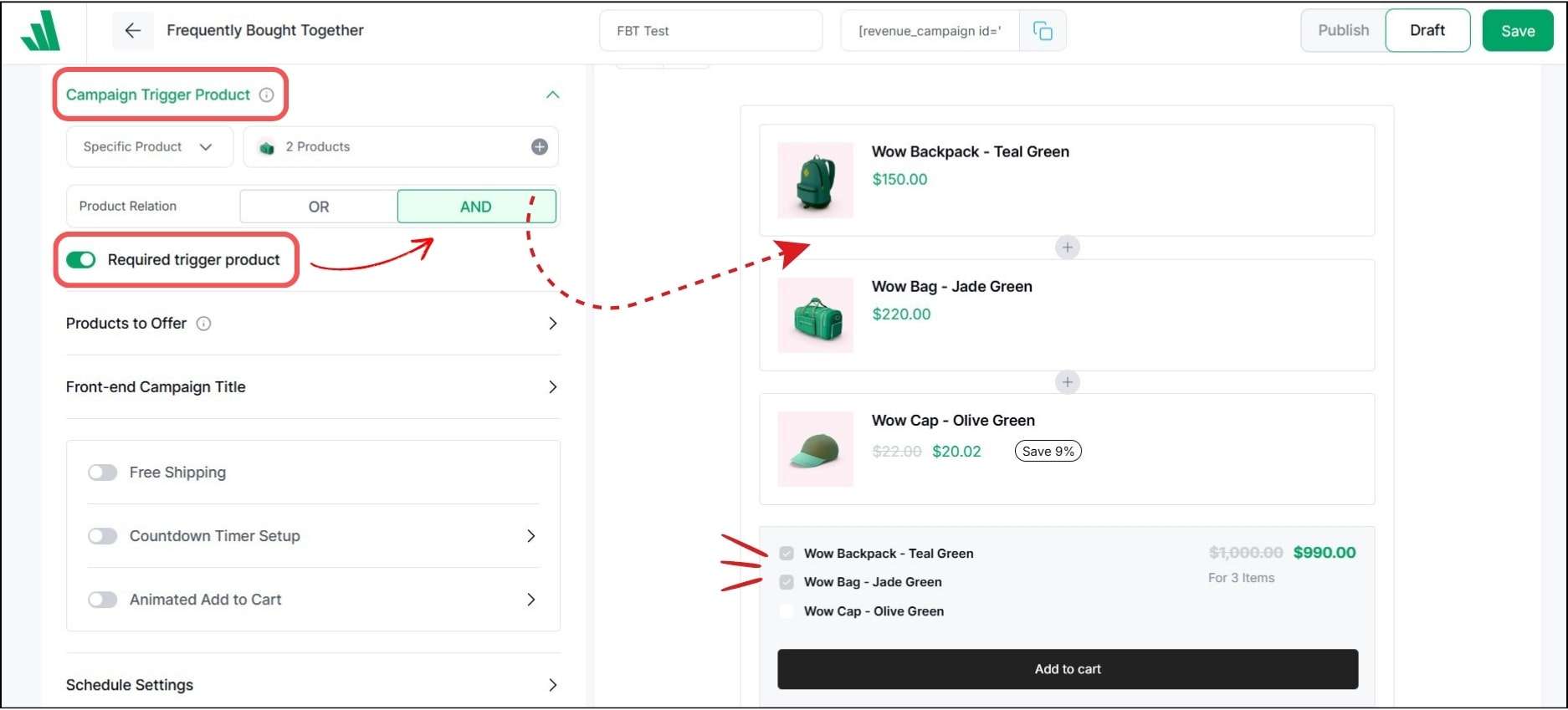
Product Relation (OR)
The “Or” relation means only the main product from the current page needs to be added to get the offer.
Example: If customers are on the main product A’s page, simply adding product A to the cart will activate the offer on related products.

Next Order Coupon
The eligibility of buyers to receive a next order coupon is determined by the product relation you set for the trigger products. These relations, “AND” and “OR,” define whether buyers need to purchase all or just one of the specified trigger products to qualify for the coupon.
Product Relation (AND)
When using the “AND” relation, buyers must purchase all the products you’ve designated as trigger products to be eligible for the next order coupon. This means that leaving out even one of the trigger products will disqualify them from receiving the coupon.
Example: You own an online store selling kitchenware. You want to reward customers who purchase both a blender and a toaster. To set this up, you create a next order coupon with the following trigger products with the relation AND:
- Blender
- Toaster
In this case, only customers who buy both the blender and the toaster in the same order will qualify for the next order coupon. If a customer buys only the blender or only the toaster, they will not be eligible.
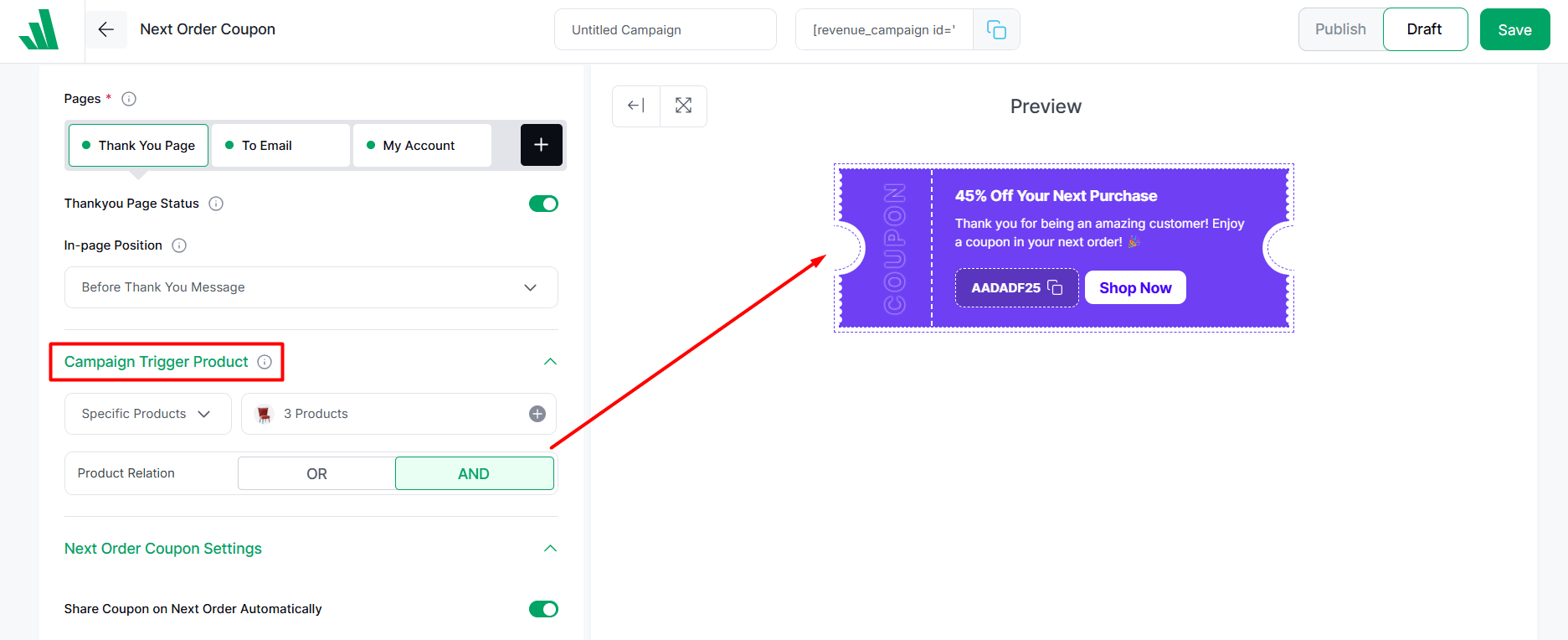
Product Relation (OR)
With the “OR” relation, buyers need to purchase any one of the trigger products to qualify for the next order coupon. This gives customers more flexibility, as purchasing any single product from the trigger list will make them eligible.
Example: Continuing with the kitchenware store example, let’s say you want to reward customers who purchase either a coffee maker or a kettle. To set this up, you create a next order coupon with the following trigger products with the relation OR:
- Coffee Maker
- Kettle
Here, customers who buy only the coffee maker will still be eligible for the coupon, and the same applies if they purchase only the kettle.
